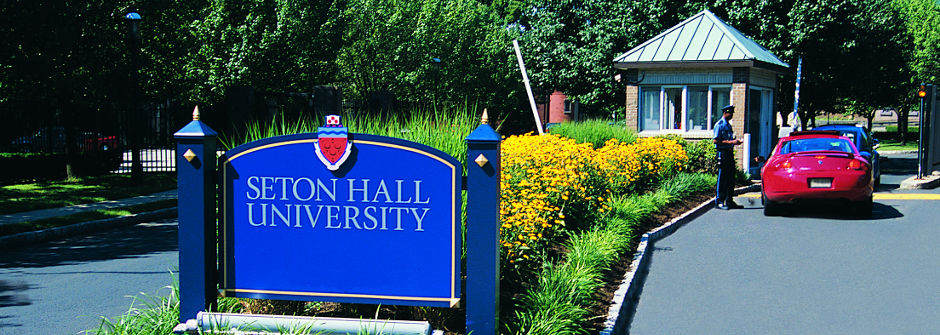By Lev D. Zilbermints
As the controversy around Seton Hall University (SHU) doing nothing about sexual assault allegations swirls, out of the past comes another fateful example: the Boland Hall Fire of Jan. 19, 2000. Three students died in the fire, and 62 others were injured, four of them critically. Like today’s controversy, the Boland Hall Fire happened because SHU did nothing to prevent it.
The question then, is history repeating itself?
“Local Talk” did research and compared the two tragedies. Though separated by the distance of more than 22 years, there are some similarities between the two. In this article, it will be demonstrated how the administration of Seton Hall University failed to protect its students from the Boland Hall Fire in 2000 and sexual assault in 2018 – 2022. Instead, warnings went unheeded until the worst happened. No preventive action was taken to safeguard the SHU community until after the tragedies occurred.
The first similarity is that in 1996 and circa 2018 – and maybe earlier – the administration was informed by students about the need for preventive action. In December 1996, the Setonian wrote an opinion by newspaper staff about the need for sprinklers in the dorms, including Boland Hall. No action was taken, and in January 2000, the Boland Hall Fire was the result.
Fast forward to 2022. “Local Talk” has already written in its May 12 front-page article about how SHU administration failed to adequately address the sexual assault allegations. Protecting Pirates, a new organization formed by sexual assault survivors and their allies, told “Local Talk” how SHU is avoiding enforcing Title IX. The May 19 issue of “Local Talk” had an interview with Emily Archibald, a former student who transferred to another school because SHU did not give her the help she needed. Instead, SHU did nothing.
The second similarity is the effect on students and the community at large. After the Boland Hall Fire, Seton Hall University reached a settlement in 2001 with the victims. The school paid out millions of dollars in compensation and damages to the victims’ families. The legal fees incurred by SHU are unknown, but possibly in the thousands of dollars range, maybe even more. It was not until 2007 that all legal issues were dealt with. As stated earlier, 3 students died in the fire, and 62 were injured, 4 of them critically.
The aftermath resulted in the New Jersey Legislature passing the strictest law in the nation concerning anti-fire measures. From now on, all dormitories were required by law to have sprinklers.
Comparing the Boland Hall Fire to the sexual allegations case, the similarity is that both have lawsuits. As stated earlier, SHU reached a settlement with the victims’ families in 2001. These were reportedly in the millions of dollars. Whether or not SHU will reach a settlement with the sexual assault survivors is something that only time will tell. If history is any guide, SHU will at some point reach a settlement with the sexual assault survivors. However, that will only happen after a lawsuit.
The two freshmen responsible for the Boland Hall Fire, Sean Ryan and Joseph LePore, were sentenced in January 2007 to five years in prison. One was released on parole in 2009, the other, in 2010. As reported by nj.com, some of the victims’ families were upset that the investigation took 3.5 years to complete and that both Ryan and LePore received relatively light prison sentences.
Comparatively speaking, in the sexual assault allegations case, students and their allies are upset that rapists have not been published by the school. What could happen are charges against alleged rapists on the local, state, and federal level. Seton Hall University will face enormous public pressure to ensure that it conforms to both the letter and spirit of Title IX.
As was stated by Emily Archibald in her May 19 interview, “We feel that it is important to note that discouraging rape survivors from going forward with investigations leads to under-reporting crimes in the Annual Safety Report published on Seton Hall’s website. This is a tool which is used to communicate the amount of on-campus crimes to people who seek out the report such as prospective students.
If you under-report sex crimes on campus, it makes the institution look very safe. Whether administrators are acting the way they are to affect the Annual Safety Report, wholly or partially, we can’t say. However, we do know that their actions have implications on the security report, and reporting fewer instances of crime on campus makes the university look more appealing.”
Emily Archibald and Protecting Pirates also stated in the interview, “…it appears that administration did not make an effort to investigate the rape independently when it was initially reported.”
Another similarity, widely reported in 2000 and later, is that Boland Hall did not have sprinklers in dorms. There were fire hoses, but they were pulled a few days before the fire happened. In 2022, “…there is no security camera at the front desk of dormitories. The hallways (as far as we know) also do not have cameras, so footage may be scarce,” said Ms. Archibald in her May 19 interview.


